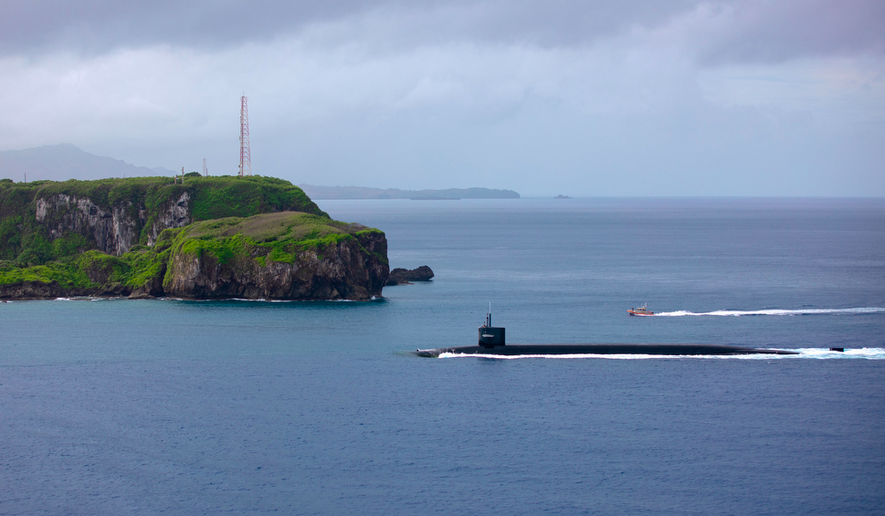A U.S. Navy Ohio-class nuclear submarine arrived at the U.S. island of Guam recently and could be the first such submarine to sail to South Korea since the 1980s, under an agreement announced by Seoul and Washington on Wednesday.
The USS Maine made a “pit stop” in Guam on April 18, the Navy said in a Facebook post Wednesday. The voyage came as President Biden and visiting South Korean President Yoon Suk Yeol announced a new agreement giving Seoul a greater role in nuclear deterrence planning against North Korea.
The “Washington Declaration” seeks to strengthen the traditional U.S. policy of “extended deterrence” and discuss planning with South Korea, which has declined to pursue its own nuclear weapons program even as it faces a hostile, nuclear-armed North Korea.
The agreement also calls for greater visibility of U.S. nuclear forces in the Korean Peninsula “as evidenced by the upcoming visit of a U.S. nuclear ballistic missile submarine” to South Korea.
Pentagon spokesman Brig. Gen. Pat Ryder declined to specify when the first nuclear-armed missile submarine would visit South Korea, but said the upcoming visit will be carried out by an Ohio-class submarine.
The Maine was commissioned in 1995 and is currently based at Naval Submarine Base Bangor in Washington state. It carries more than 20 Trident II D-5 intercontinental ballistic missiles armed with multiple warheads.
A Navy spokeswoman did not immediately respond to a request for comment on whether the Maine is en route to South Korea.
The United States at one time deployed several hundred tactical nuclear weapons in South Korea to deter a North Korean invasion. U.S. nuclear missile submarines also made frequent stops in South Korea during the late 1970s as part of what the Pentagon called its “nuclear umbrella” strategy, making as many as two or three port calls a month.
The George H.W. Bush administration unilaterally withdrew all nuclear weapons from South Korea as in 1992 South and North Korea signed an agreement not to produce, test, receive, store, deploy or use nuclear weapons.
North Korea, however, violated the joint declaration and a 1994 “Agreed Framework” under President Clinton that called on Pyongyang to freeze its nuclear programs.
Instead, North Korea covertly built several hundred nuclear warheads and a variety of medium-, intermediate- and long-range missiles.
A Biden administration official said there are no plans to re-deploy U.S. nuclear weapons, tactical or strategic, in South Korea. The new policy unveiled this week will include ballistic missile submarine visits as well as temporary deployments of bombers or aircraft carriers.
U.S. forces in South Korea also are expected to conduct exercises with nuclear-capable jets, such as the new F-35 that will be able to carry nuclear bombs by 2024.
The nuclear declaration is part of an effort by the Biden administration to persuade South Korea not to develop its own nuclear weapons capability in the face of growing nuclear threats from North Korea. Opinion polls say a clear majority of South Koreans favor a domestic nuclear arms capability, reflecting doubts the U.S. would risk a nuclear attack from Pyongyang in the event of war.
Mr. Yoon said in January that because of the North Korean nuclear dangers that South Korea “introduce tactical nuclear arms [on the Korean peninsula] or build them on our own.”
Critics of U.S. nuclear nonproliferation policy say pressure against allowing states like South Korea and Japan to build their nuclear arsenal have increased the danger of regional war.
• Bill Gertz can be reached at bgertz@washingtontimes.com.




Please read our comment policy before commenting.